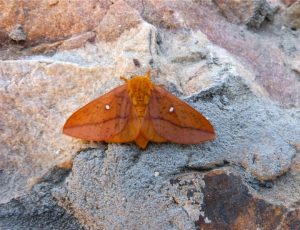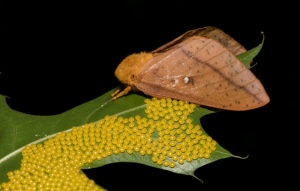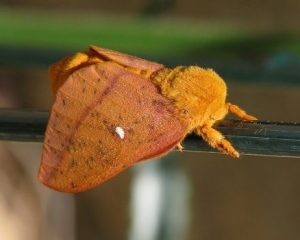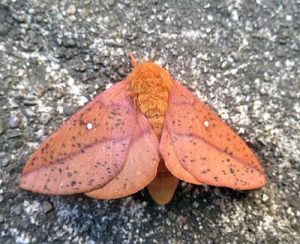Orange-tipped Oakworm Moth (Anisota senatoria)
Orangestriped oakworm of the Saturniidae family and Ceratocampinae subfamily is indigenous to parts of North America. It has a striped orange appearance and feeds primarily on oak plants that therefore result in its name. The orange striped oakworm also has a striking similarity with two other species of its family: the yellowstriped oakworm and Finlayson’s oakworm.
auth1.dpr.ncparks.gov
Scientific Classification
- Family: Saturniidae
- Genus: Anisota
- Scientific Name: Anisota senatoria
Description and Identification
Caterpillar
In the beginning, the larvae are sociable, while in the latter instars, they eventually become secluded. When young, they are orange with a black head. By the final instar, they become black with orange stripes to their sides with spiny horns on their thorax’s second segment having a length of about 5 cm. They mostly feed on the oak plants between August and September.
Though the caterpillars thrive on oak plants, they are not poisonous and do not cause much damage.
Pupa
The cylindrical-shaped pupa has a dark brown body that appears blunt near their head and tapered towards their body’s rare end. Like other members of their subfamily, the larvae make burrow underground when ready to pupate. That is where the pupal phase takes place.
Adult Moth
Sexual Dimorphism: Present
Females are larger than their male counterparts with a stout appearance. The difference is also seen in their wing patterns.
Color and Appearance
Forewings
Females: They have yellowish-orange wings with silver-white spots and black lines intersecting them.
Males: The wings appear reddish-brown with pale lines and white spots.
Hindwings
Females: The hindwings are also of the same color, similar to their forewings, with faint lines passing through them.
Males: The coloration is similar to that of their forewings.
Average Wingspan: 3 – 5 cm
Flight Pattern: Not recorded
Season: August – September
Quick Facts
| Other Names | Orangestriped oakworm |
| Distribution | Eastern North America from Great Plains to the east coast; south Ontario to central parts of Georgia |
| Habitat | Deciduous forests mostly near oak trees |
| Predators | Birds, wasps |
| Lifespan of adults | Not recorded |
| Host Plants | Mostly oak, alongside birch, chestnut, maple, hazel, hickory |
| Adult Diet | They mostly don’t feed |
Scientific Classification
- Family: Saturniidae
- Genus: Anisota
- Scientific Name: Anisota senatoria







